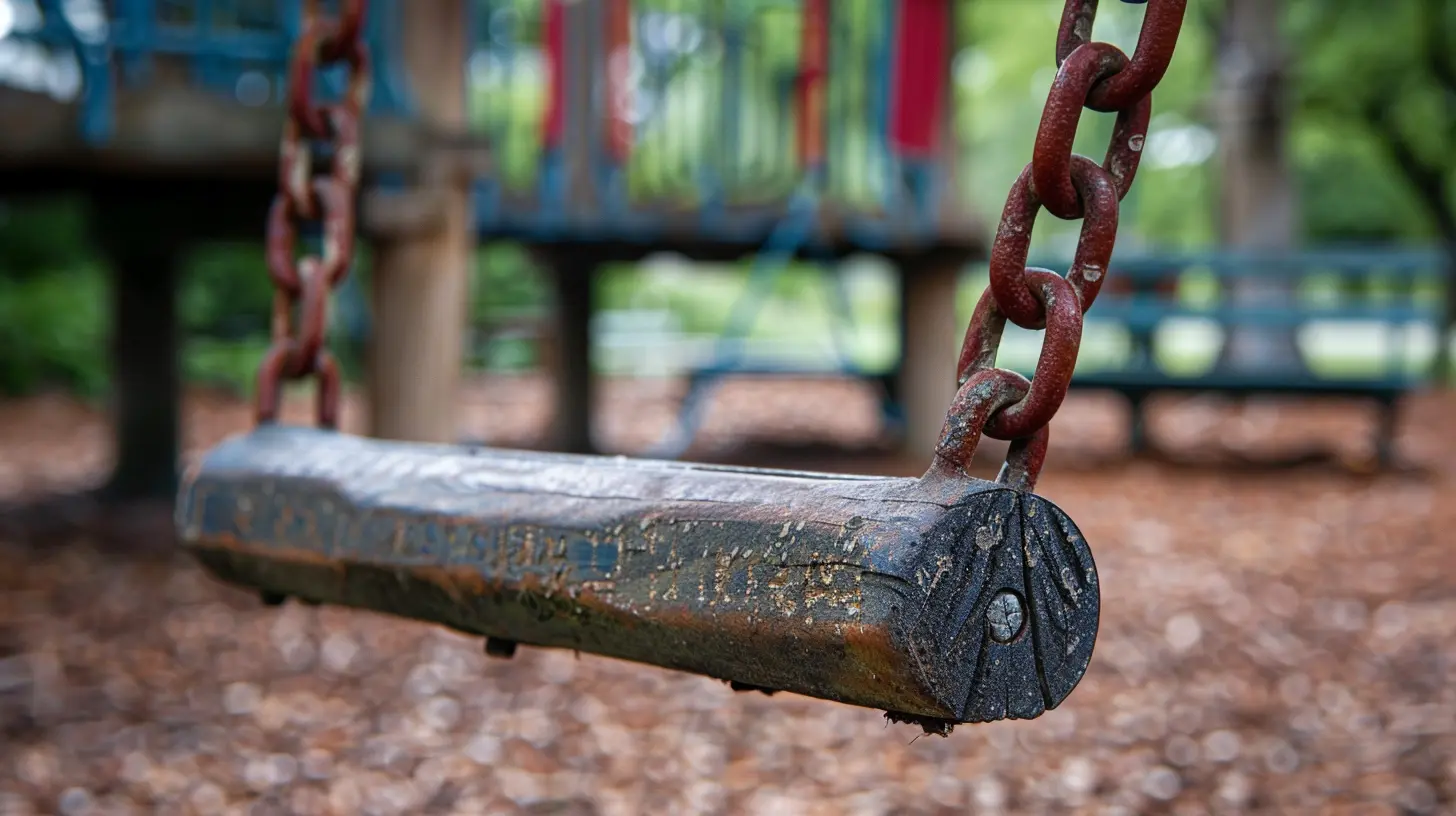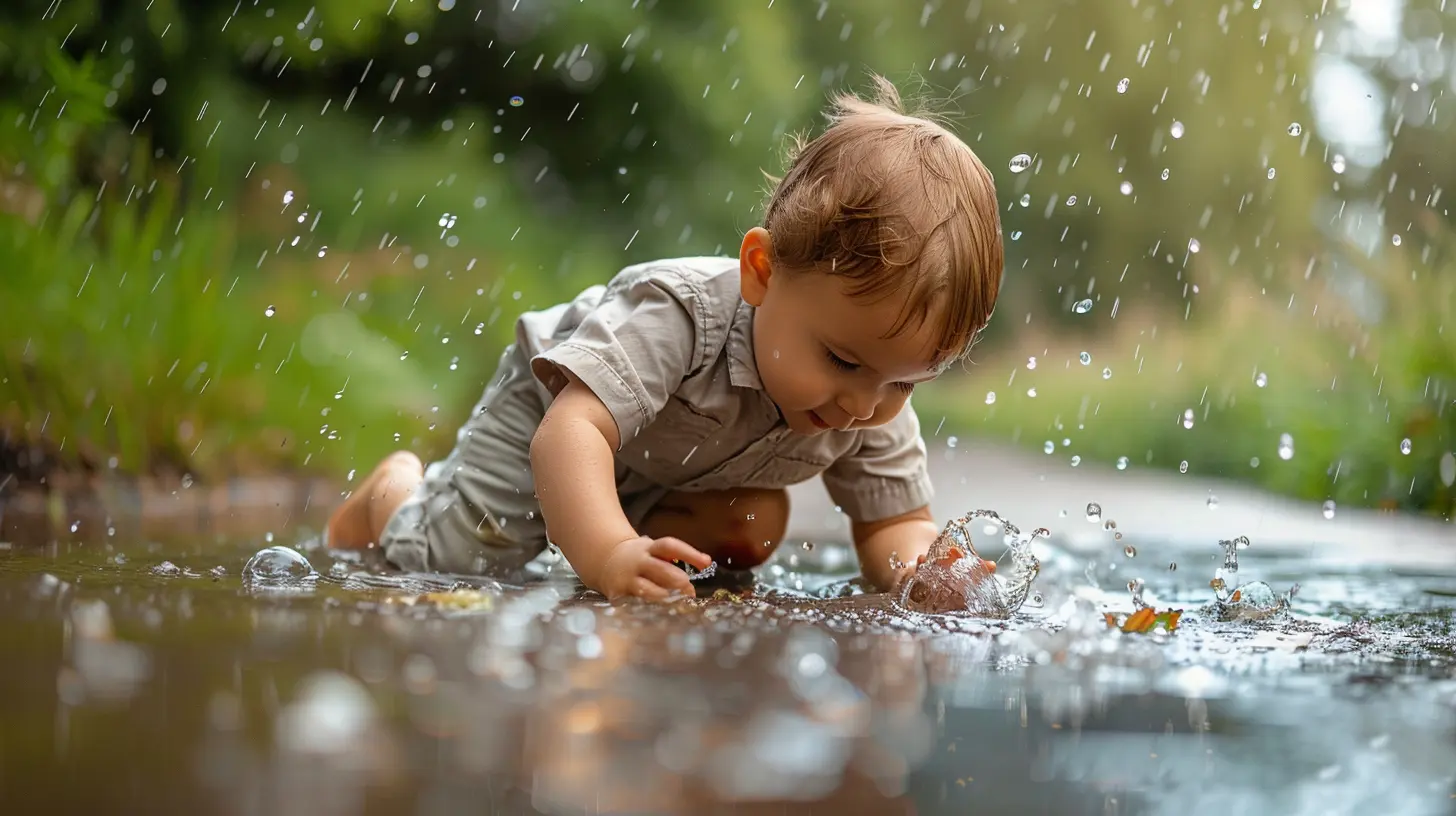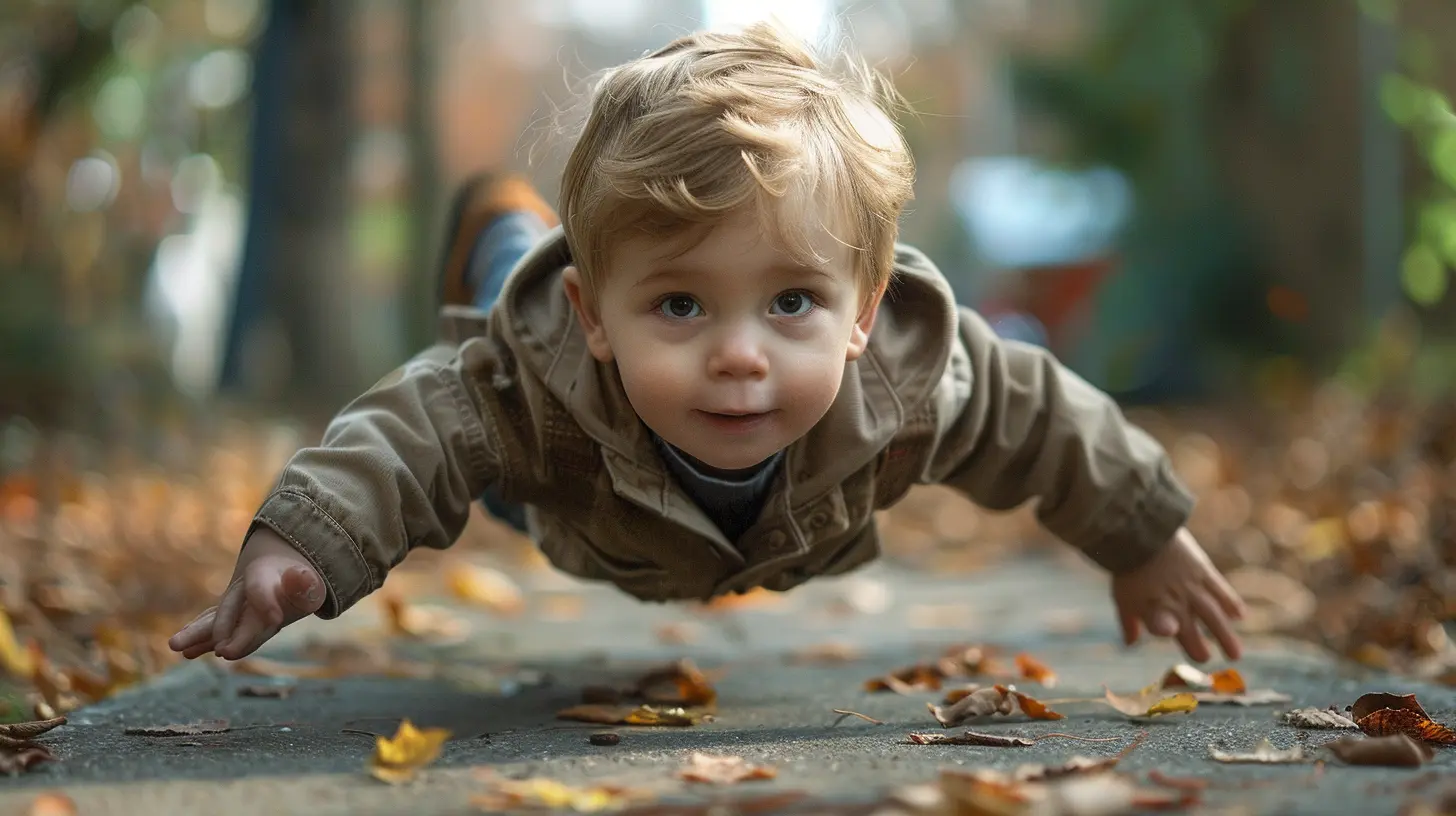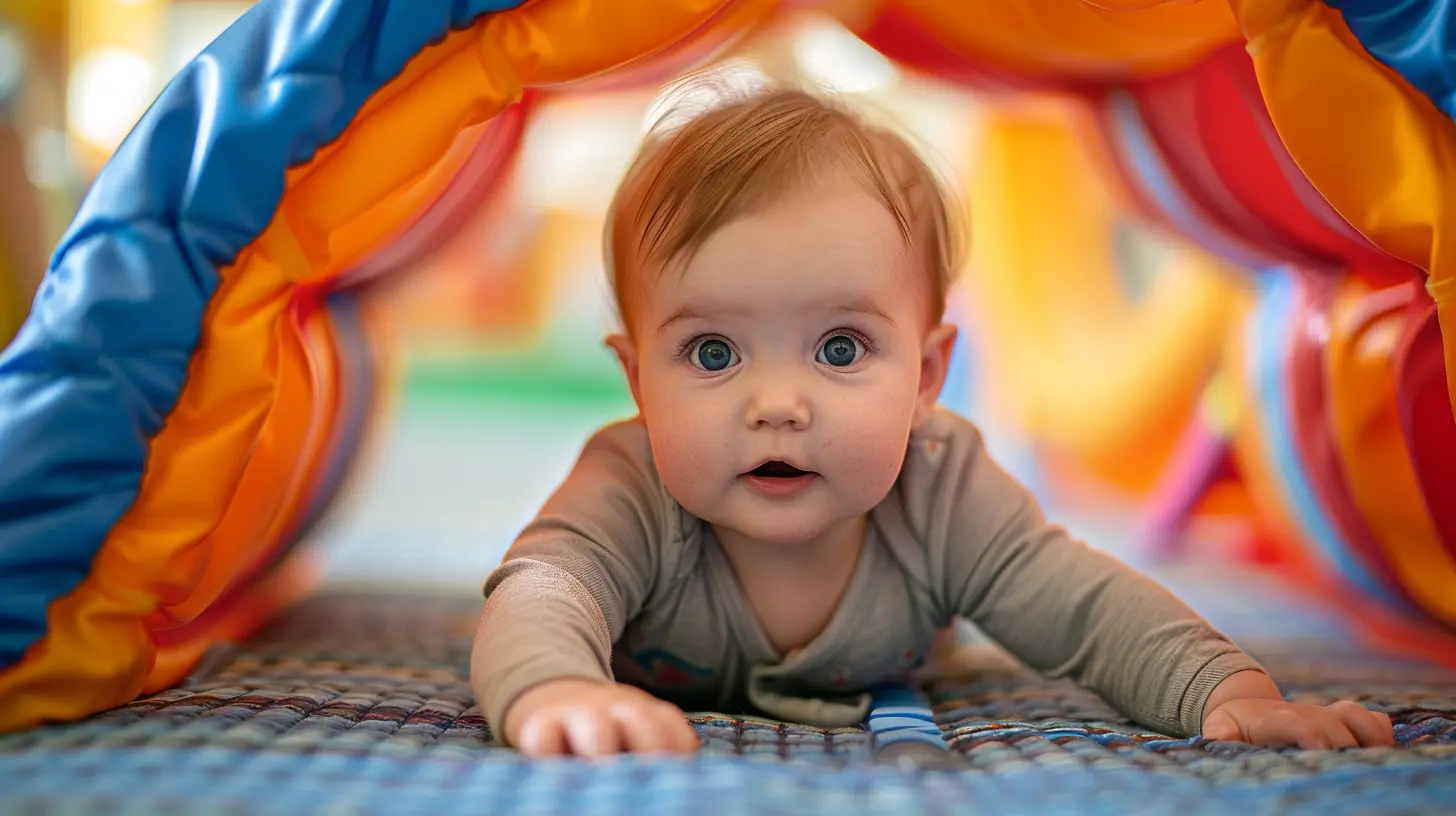Preventing Childhood Injuries While Encouraging Active Play
31 October 2025
Ah, children — tiny bundles of energy with the curious instincts of a cat and the balance of a baby giraffe. One minute they’re building castles out of couch cushions, and the next they’re dangling off the curtain rod like miniature stunt doubles. As parents, we want our kids to play, explore, get their knees dirty, and live their best sugar-fueled lives. But we also want to get through one week — just one — without an emergency room visit.
So how on Earth do we let kids be kids, burning energy like little human solar flares, without ending up with boo-boos, band-aids, and panicked Google searches for “Is this broken or just really, really bruised?”
Pull up a chair (preferably one without a Lego on it), and let’s dive into the wild world of preventing childhood injuries while encouraging active play — a task equal parts parenting wisdom and Jedi mind trick.
Why Active Play Is Absolutely Essential (Yes, Even If It’s Loud and Messy)
Let’s start with the basics. Kids aren’t meant to sit still. They’re biologically coded to move, jump, run, climb, spin until they’re dizzy, and occasionally test the structural integrity of your coffee table.Active play isn’t just fun — it’s crucial for their physical, emotional, and mental development.
Here’s what active play does for our little whirlwinds:
- Builds strong muscles and bones (future ninja warriors?)
- Improves coordination and balance (eventually)
- Boosts creativity and problem-solving skills
- Increases social skills through teamwork and negotiation (“I’ll give you the red ball if you stop putting sand in my shoe!”)
- Burns off that never-ending energy (saving your couch cushions in the process)
But with great activity comes… yep, you guessed it — potential injuries. So how do we keep the fun while avoiding the run (to the hospital)?
The Balancing Act: Encouraging Play Without Panic Attacks
Imagine parenting like being a circus performer. You’re tiptoeing across a tightrope stretched between “Let them explore” and “Please do not break that limb.”The trick is not to bubble-wrap your child like a fragile Amazon package. Instead, let’s learn how to make smart decisions that enable safe play.
1. Choose the Right Play Environment
Not all play spaces are created equal.We love the great outdoors — sunshine, bugs, possibly a squirrel sighting. But each play location comes with its own list of “watch out for that!”
✅ Safety Checklist for Play Areas:
- Age-appropriate equipment (your toddler doesn’t need to conquer a 10-foot climbing wall yet)- Soft ground surfaces like rubber mulch, wood chips, or grass — no concrete trampoline parks, please!
- Shade to prevent overheating (they may be solar-powered but still need protection)
- Fencing away from roads and water
- In your own backyard? Check for rocks, sticks, and any tools Dad left out after “fixing stuff”
If you’re at the park, do a quick scan like a superhero on patrol. Look for broken swings, exposed bolts, or anything that screams “trip hazard.”
2. Dress for Play, Not Fashion Week
Sure, your mini-me looks adorable in that new outfit, but if they’re going to pretend to be a pirate captain, they don’t need skinny jeans and flip flops.👟 Pro Tips for Playwear:
- Closed-toe shoes (no sandals for jungle gym missions)- Clothes they can comfortably move in (and you won’t cry over if they get ruined)
- Weather-appropriate gear: hat and sunscreen in summer, layers and gloves in winter
- Avoid anything with drawstrings or loose parts that could catch on equipment
Basically, if they can outrun you in it AND somersault without flashing the neighborhood, they’re good to go.
3. Teach Risk Assessment Without Killing the Fun
We want our kids to develop good judgment — to know when something feels a little too risky. But you can’t download common sense into a 5-year-old like an app.So what do you do? You teach it... sneakily.
🧠 A Few Ninja Moves for Teaching Safety:
- Ask: “Does that look safe to you?” instead of yelling, “Stop that right now!”- Talk through risks: “What could happen if you jump from there?”
- Praise good decisions: “That was smart—checking the monkey bars before swinging.”
- Let them fall (a little): Not every scraped knee is a catastrophe. Pain is an underrated life coach.
Children learn through experience, and bumps and bruises are part of growing up. Just don’t let them launch off the top bunk to test gravity at full speed.
4. Supervise Without Helicoptering
You don’t need to hover like a Google Earth camera. But you do want to be within “I can sprint there in 3 seconds flat” range.👀 Active Supervision Tips:
- Stay close enough to intervene if things get dicey- Engage when necessary, but let them lead the adventure
- Look up from your phone... yep, even during hide-and-seek
- Learn when to step in and when to let them figure it out
Think of yourself as the lifeguard at a waterslide. Present, alert, slightly sunburnt, but not jumping into every splash.
5. Equip Your Home With Safety (And Sanity) in Mind
If your kids are playing indoors (especially on rainy days when energy levels reach DEFCON 2), your home becomes an obstacle course.🛡 Child-Proof Your Indoor Jungle Gym:
- Use corner guards on furniture (don’t let them meet Mr. Coffee Table edge)- Secure bookshelves and TVs to the wall — tiny climbers see everything as Everest
- Cover outlets (because finger + socket = bad idea)
- Install gates for stairs (unless your child fancies themselves a toboggan)
- Keep cleaning supplies, scissors, and “sharp pokey things” far from reach
And maybe — just maybe — designate a specific play zone. That way, if chaos erupts, it’s contained like a controlled science experiment.
6. Encourage Activities That Build Coordination (aka the Anti-Tumble Training)
Clumsy kids? Join the club. But improving physical skills can actually prevent future tumbles, slips, and faceplants.🤸♀️ Great Activities for Better Balance:
- Obstacle courses (inside or outside)- Jump rope and hopscotch
- Dancing (freeze dance, anyone?)
- Yoga for kids — because yes, they can downward dog better than you
- Climbing walls with supervision
- Scooter and bike riding with proper gear
When kids build their core strength and spatial awareness, they’re less likely to fall flat on their little faces every ten minutes. That’s a win.
7. Helmets Are Cool. Like, Superhero Cool.
Repeat after me: helmets are not optional.Whether your child is on a bike, scooter, rollerblades, or even cardboard box "sledding" down a hill (yes, that happens), they need a brain bucket.
🧠 Helmet Guidelines:
- It should fit snugly — no wobbling- Straps fastened and comfortable
- Meets safety standards (CPSC certified)
- Let them decorate it! Stickers make safety fly
Want to make helmets cool? Pretend they’re putting on their superhero armor. Safety plus imagination = total parental win.
8. Know What to Do When (Not If) an Injury Happens
Despite every precaution, something eventually goes bump. It’s okay. You’ve got this.🧰 Parent First-Aid Survival Kit:
- Ice packs (bonus: fun shapes or animals)- Band-aids in every cartoon character ever made
- Antibacterial spray or wipes
- Hydrocortisone cream (for unexpected itches)
- Tweezers (splinters, the silent assassins)
- A dose of your best "You're okay, sweetheart" tone
Know when it’s time to call the doc. If something swells, bleeds non-stop, or if your child says “I can’t feel my leg," that’s when you trade the bandaid for a professional.
9. Let Them Fail (Safely)
Hear me out — failure isn’t fatal. Kids need to know what trying, failing, and trying again feels like.When we constantly step in, we rob them of resilience. A scraped knee teaches more than a lecture ever will.
So let them test their limits — within reason. Let them climb, jump, even mess up. You’re there to guide them, not bubble-wrap them into inactivity.
10. Model Safe Play Yourself
If you’re juggling flaming sticks while yelling “Be careful!” your credibility plummets.Show them how it’s done:
- Wear a helmet with them
- Warm up before a run (even if you’re jogging after the ice cream truck)
- Stretch, hydrate, take breaks — all the things you want them to do
- Laugh when you mess up — show that play isn’t about perfection
Kids mimic what they see. Be their playful, slightly clumsy role model.
Final Thoughts: Safety Isn’t the Opposite of Fun
Letting your kids play freely and safely isn’t some impossible feat. It’s about finding that magical middle ground — the sweet spot where scraped knees are honorary badges and emergency room visits are genuinely rare.So go ahead — let them climb trees, bounce on trampolines, and turn your living room into a ninja training camp. Just do it with a dash of planning, a sprinkle of common sense, and a whole lot of love.
Because in the end, we’re not raising porcelain dolls. We’re raising strong, confident, adventurous little humans who know how to fall and get back up. Preferably without breaking anything.
all images in this post were generated using AI tools
Category:
Childrens HealthAuthor:

Kelly Snow
Discussion
rate this article
1 comments
Amanda McGowan
Thank you for this insightful article! Your tips on balancing safety and active play are invaluable for fostering healthy, happy childhoods.
November 3, 2025 at 4:50 PM

Kelly Snow
Thank you for your kind words! I'm glad you found the tips valuable for promoting safe and active play.


